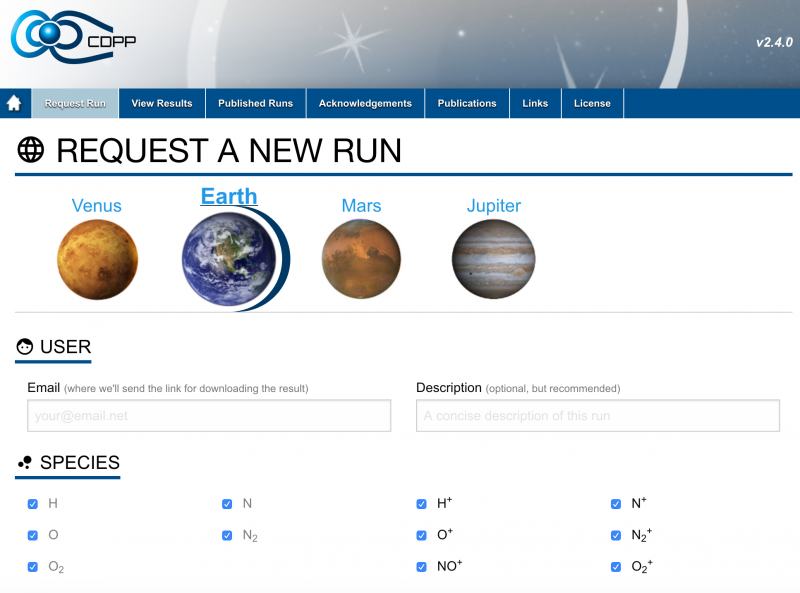The 12 Planetary Space Weather Services of the Europlanet H2020 project are operational !
Under Horizon 2020, the Europlanet 2020 Research Infrastructure developed an entirely new Virtual Access Service led by IRAP, “Planetary Space Weather Services” (PSWS), that extends the concepts of space weather and space situational awareness to other planets in our Solar System and in particular to spacecraft that voyage through it.

PSWS (http://planetaryspaceweather-europlanet.irap.omp.eu/) now provide 12 new services distributed over 4 different service domains : A. Prediction, B. Detection, C. Modelling, D. Alerts – to the research community, professional and amateurs, space agencies, and industrial partners planning space missions:
- A1. Heliopropa (IRAP/CDPP), http://heliopropa.irap.omp.eu
A service based on a 1-dimensional magnetohydrodynamics solar wind propagator to predict the properties of the solar wind at planets and probes - A2. Propagation Tool (IRAP/CNRS/CDPP), http://propagationtool.cdpp.eu
A service extended to include comets, giant planet auroral emissions, and catalogues of solar wind disturbances - A3. Meteor showers (Observatoire de Paris), http://vespa.obspm.fr/planetary/data/epn/query/all/
A service to link ephemerides of Solar System objects to predictable meteor showers that impact terrestrial planet surfaces or giant planet atmospheres - A4. Cometary tail crossings (MSSL/UCL), http://www.mssl.ucl.ac.uk/comet_tail/
A service to predict comet tail crossings by any interplanetary spacecraft including future missions like Solar Orbiter - B1. Lunar impacts (University of Aberystwyth), https://twitter.com/lunarnaut
A service to detect visible flashes in lunar amateur or professional images - B2. Giant planet fireballs (Universidad del Pais Vasco), http://pvol2.ehu.eus/psws/jovian_impacts/
A service to detect visible fireballs in giant planet amateur or professional images. - B3. Cometary Tails (MSSL/UCL), http://www.mssl.ucl.ac.uk/comet_tail/
A service to to obtain an estimate for the solar wind speed at the comet from comet images - C1. Transplanet (IRAP/CNRS/CDPP), http://transplanet.irap.omp.eu
A service to do runs on request of the ionospheres of Mars, Venus, the Earth, and Jupiter - C2. Mars radiation environment (University of Aberystwyth, DLR, IRAP/CNRS/CDPP), http://radmaree.irap.omp.eu
A service to do runs on request to model the radiation dose at the surface of Mars - C3. Giant planet magnetodiscs (UCL, IRAP/CNRS/CDPP), http://magnetodisc.irap.omp.eu
A service to do runs on request to model the magnetic field configuration of the Jovian and Saturnian magnetodisks - C4. Jupiter’s thermosphere (MSSL/ICL)
Model outputs for the Jovian thermopshere - D1. Alerts (Observatoire de Paris, IRAP/CNRS/CDPP, SRC PAS), http://alerts-psws.irap.omp.eu/
An alert service linked to the planetary meteor shower and planetary space weather predictions
Some of these services are detailed in the Planetary Space Weather topical issue of Journal of Space Weather and Space Climate.
IRAP Contact
- Nicolas André, nicolas.andre@irap.omp.eu






